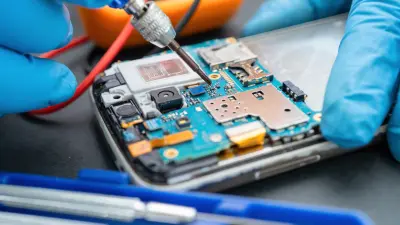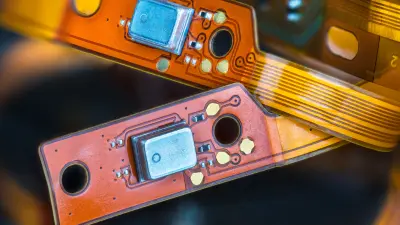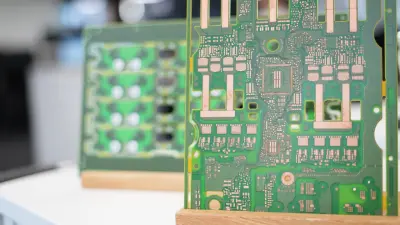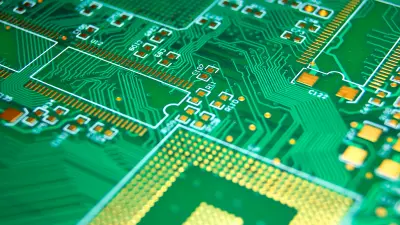The future is flexible! Why flexible PCBs are essential for modern electronics

In a world driven by miniaturization and dynamic design, the rigid, green circuit boards of the past can no longer meet every single challenge. From the complex dashboard of an electric vehicle (EV) to a life-saving medical device, electronics must now bend, twist, and fit into spaces previously thought impossible. This is where flexible Printed Circuit Boards (flex PCBs) enter the game, transitioning from a rather niche component to a cornerstone of innovation.
For Original Equipment Manufacturers (OEMs), understanding and leveraging flexible electronics is no longer an option – it's a competitive obligation. This article explores the key benefits of flex PCBs, their transformative applications, and how to reliably source them for your next project.
What exactly are flexible PCBs?
Unlike traditional rigid boards made from materials like FR-4, flexible PCBs are built on a foundation of pliant materials, most commonly polyimide. This allows the circuits to bend, fold, and conform to the three-dimensional shape of a product. This simple difference in material unlocks a world of design possibilities. If you want to read more about the characteristics and requirements of flexible boards, tap into our overview page of flexible PCBs.

The core advantages: bendability and other features
The benefits of integrating flexible circuits go far beyond their physical pliability. For engineers and product designers, they offer a compelling suite of benefits.
- Significant space and weight reduction: flex circuits can eliminate the need for bulky connectors and ribbon cables, drastically reducing the overall weight and size of an electronic assembly. This is e.g. a critical factor in the automotive and medical industry.
- Enhanced durability and reliability: the inherent elasticity of a flex board allows it to absorb shocks and vibrations far better than a rigid board. With fewer interconnects and solder joints, there are fewer potential points of failure, leading to a more robust and reliable product.
- Dynamic applications: flexible PCBs are essential for products with moving parts, such as robotic arms, printer heads, or hinged devices, as they can withstand thousands of bend cycles without compromising electrical integrity.
- Material requirements: beside all above external advantages, in some cases Flex PCB is used only because of the advantages that Polyimide is offering as a material, such as resistance to extreme temperatures and chemicals, and polluted environments in general.
- Simplified assembly: by creating a single, integrated circuit solution, flex PCBs can streamline the manufacturing process by integrate several PCBs and connectors into one single unit, reducing assembly time and labor costs. Would you like to learn more about reducing PCB costs? Then read our article on this topic: understanding PCB cost drivers.

Flexible PCB applications: powering innovation across industries

The impact of flexible circuits is felt across every major technology sector.
- Automotive: in vehicles, every gram and millimeter counts. Flexible PCBs are used in LED lighting strips, steering column switches, battery management systems, and sensor arrays, enabling more features in tighter spaces.
- Medical technology: from hearing aids and pacemakers to wearable patient monitors and advanced surgical tools, flexible electronics allow for devices that are often more comfortable, discreet, and reliable.
- Industrial and robotics: the articulated limbs of a robot or the moving components of industrial machinery rely on flexible circuits to maintain constant electrical connection through a wide range of motion.
- Communications: in complex devices like satellites and high-frequency communication systems, the lightweight nature and stable electrical properties of flex circuits are indispensable.

Your service for flexible electronics: copperdot – powered by Bosch
The transition to flexible PCBs introduces new design and manufacturing considerations, from specifying the correct bend radius to choosing the right materials. Success requires a partner with deep expertise and a commitment to quality.
At Bosch, our principle of creating technology "Invented for life" guides our approach. With copperdot, we extend this promise to you. We act as your trusted interface to the world of advanced PCB manufacturing. Our team provides expert Design for Manufacturing (DFM) analysis specifically for flexible circuits, ensuring your design is optimized for performance and reliability.
We connect you to a global network of Bosch-qualified manufacturers who specialize in flexible PCBs, handling the entire procurement process from qualification to quality assurance. With copperdot, you gain access to the cutting edge of flexible electronics with the peace of mind that comes from working with a partner dedicated to quality and precision.
The future of electronics is adaptable, durable, and three-dimensional. Embrace the change and let copperdot guide you build it.





